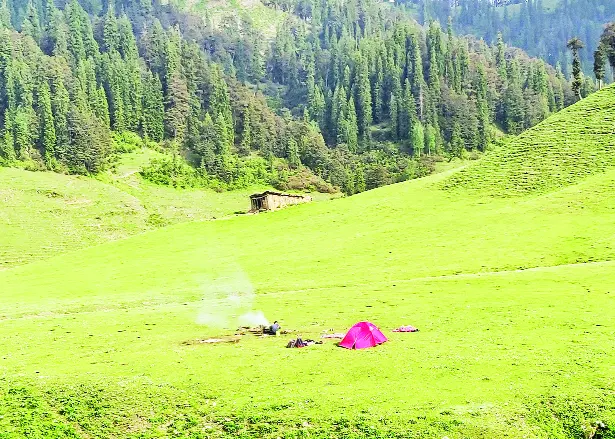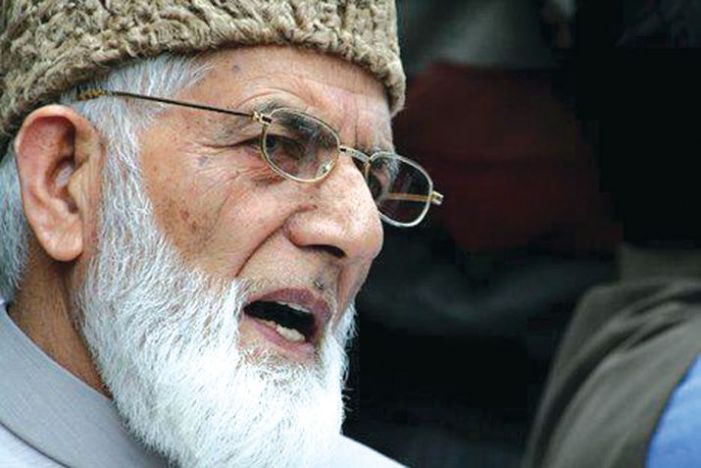Much has been written and said about the pre-historic cultures of Kashmir and it is widely believed that man of that period had been living a nomadic style of life and used the natural caves as shelters. During the last few decades Archaeologists have discovered few ancient cave settlements. They have also found the tools used by the primitive man in his olden Stone Age’s period. It is perhaps now well established fact that like many other places, Kashmir has been found a suitable place to live in by the early man. Earlier there was some confusion about its existence but the investigations carried by archaeologists to a greater extent have collected a data to trace out the early living system of the man in Kashmir.
The recent investigations under taken by the archaeologists at Overa valley of Pahalgam revealed few stone tools of Paleolithic ages, these included the single edged stone blades and arrows identified by the investigators as tools used by the early men who lived in the caves of over a valley .
Earlier, these archaeologists during their investigations of Manasbal valley revealed the imprints of early man in the form of his habitat ional abodes, which consisted of caves and some Paleolithic (early Stone Age) tools. The archaeologists then believed that these caves were used as shelters by the prehistoric man. The investigation report of Manasbal has been dealt in a greater length by the investigator of the site under the title, `Paleolithic Habitat ional Site at Manasbal’ which had appeared in the journal of Central Asian Studies 1997.
The task of discovering the evidences of pre-historic settlements in Kashmir had been way back taken up by the British and Indian archaeologists. The first investigation of this kind was initiated by Professor H D Sankalia when he explored the imprints of early man from Lidder Valley in as early as in 1969. He came across several ancient stone tools, which included a huge flake tool and hand axe.
These finds were later endorsed by similar finds form the upper Vishow and Rimbar valleys of Shopian and Kulgam districts, However, these finds could not throw any such light on the living styles of the early man, except this that perhaps the early Kashmiri man had used these tools e for preying of animals and also protected their selves form the attacks of wilds.
It was not known where these people took shelter until the excavations at Burzhama and Gufkral archaeological sites revealed few cave pits besides stone and bone tools. The results of observations of these sites got further endorsed by the discovery of stone tools and finding of caves which were located here at varying heights of the mountain of Manasbal.
The earlier excavation of 1960’s undertaken at Burzhama and Gufkral sites fairly yielded a good amount of information of prehistoric way of life. The findings of the cave pits revealed that the people of the age had lived in caves, and while the discovery of burials helped to believe that they used to bury their dead in graves either in crouching or in extended positions. Several burials are reported were encountered by archaeologists in Burzhama excavation.
One of the drawings engraved on a rock encountered here depicted a hunting scene which had suggested that the people of the settlement had been making prey of the animals, and using its meat for eating while the stuff for covering of their bodies.
Although the Manasbal tools have been displayed in the University Museum but the exhumed materials of Burzhama and Gufkral sites were taken outside the state. Despite of exhibiting those artifacts in any museum of the state are learnt to have been housed in other museums of India.
In absence of these artifacts, the researchers and tourists who often visit these archaeological sites are unable to understand the tools and instruments used by early man in their proper perspective.
It is stressed upon the authorities that steps may be taken which would facilitate the concerned agency to acquire back the tools of pre-historic Kashmir. This would also enable researches to get an easy excess to the collections and their observations of these materials is expected shall throw more lights on pre-historic culture of Kashmir.
Besides, the site museums may also be set up at the more significant archaeological sites and the material discovered from the particular site shall be displayed there so that visitors are able to see and explore the ancient life style of Kashmir. It is very unfortunate that no site museum has been set up at any excavated archaeological site.






